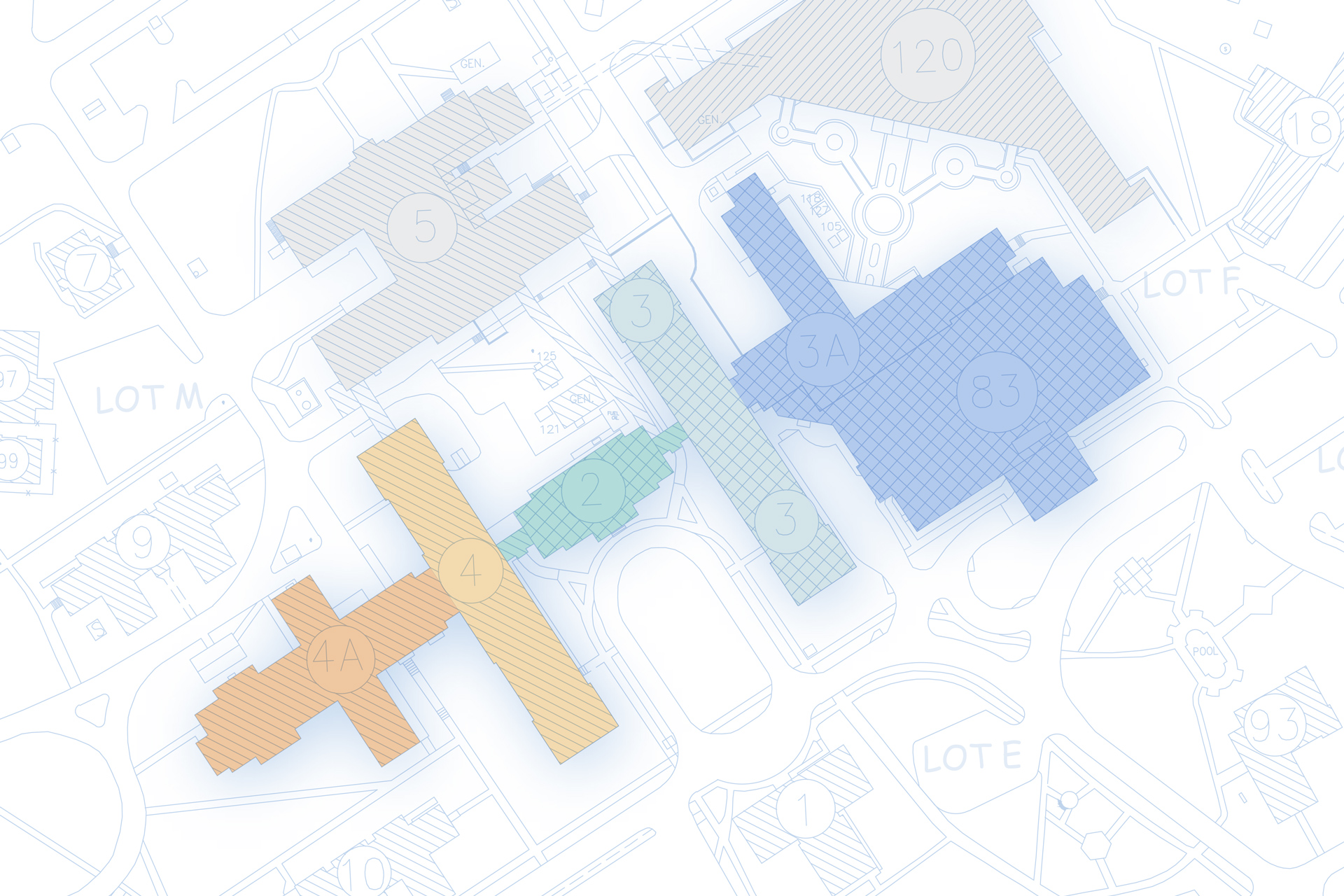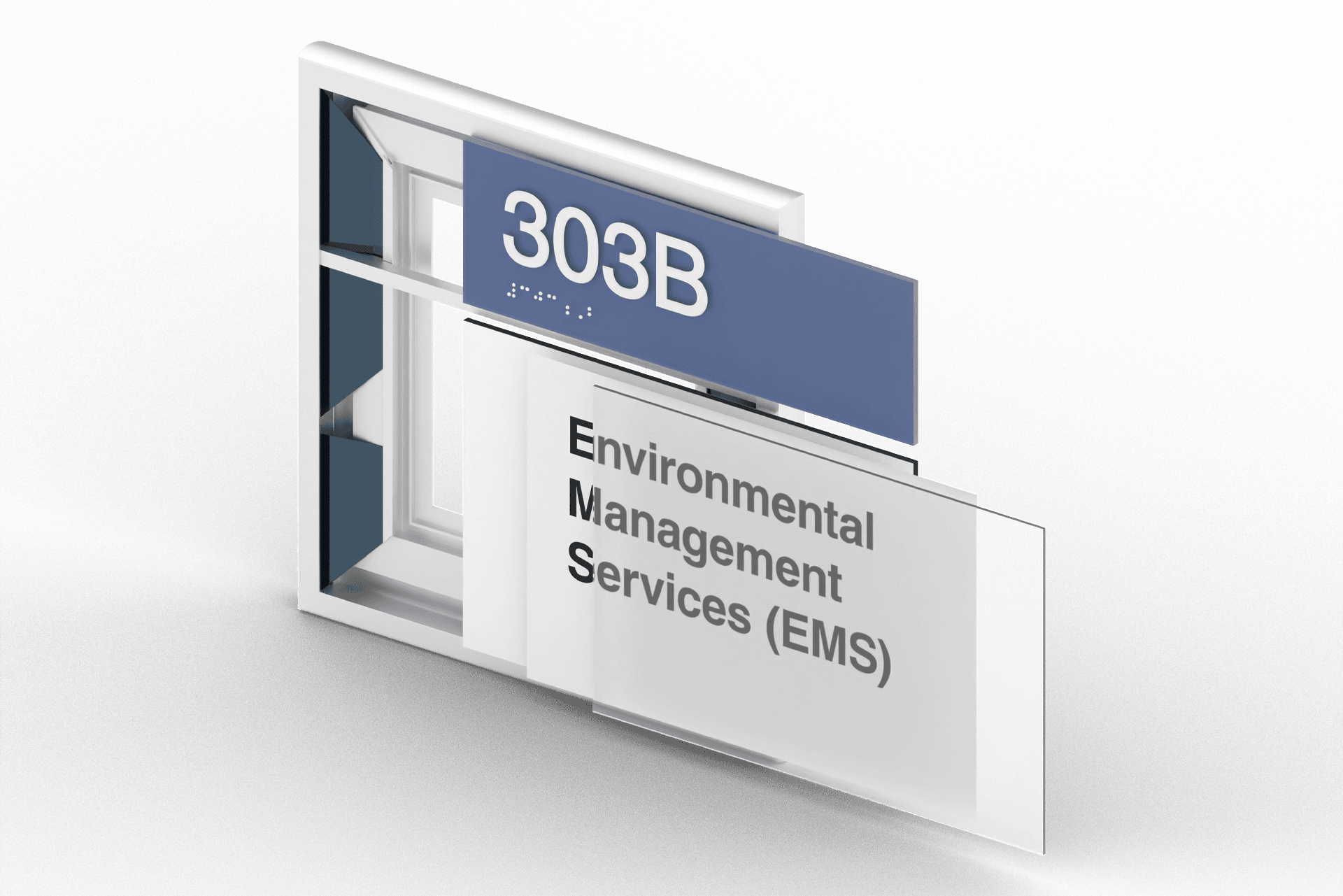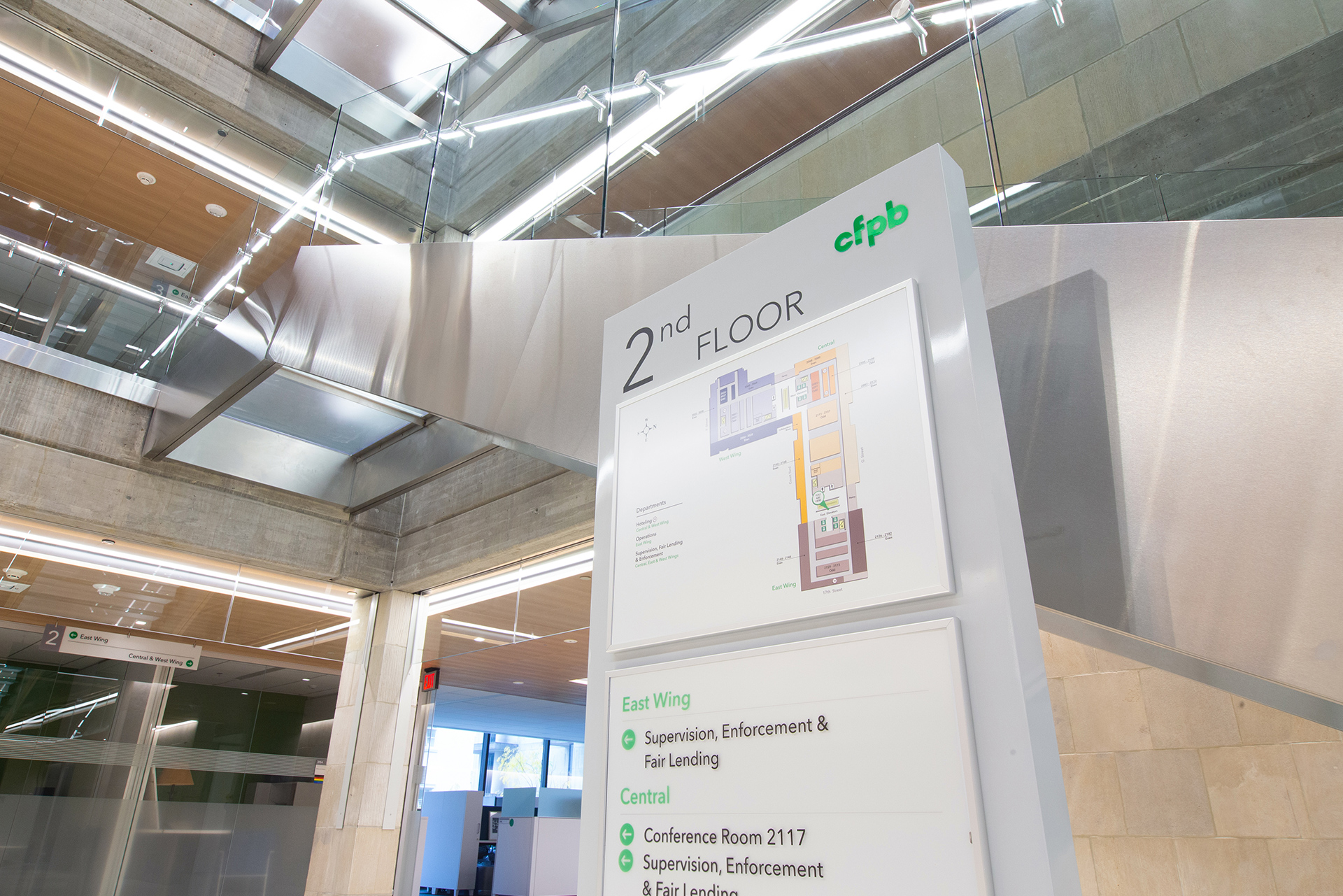
Leading the Way Toward Better Care
Starting Healthcare Signage & Wayfinding
Projects the Right Way
Why Wayfinding Matters in Healthcare Environments
In healthcare environments, wayfinding is more than just signage. It directly impacts how patients, visitors, and staff experience and navigate a facility.
Here are four reasons it’s essential:
- 1
Improves Patient Experience
Reduces stress and confusion by providing consistent, intuitive guidance from parking to check-in. - 2
Supports Operational Efficiency
Streamlined navigation means less staff time spent giving directions and fewer missed appointments. - 3
Accessibility & Compliance
Better adherence to code and regulatory bodies like ADA, ABA, NFPA, and the VA Signage Design Manual helps increase accessibility and reduce infractions. - 4
Empathy-Driven Design
Sign systems must accommodate a wide range of users, including those with physical, cognitive, or language challenges.

Start with a Master Plan
Setting the Standard and Vision
A well-crafted wayfinding master plan defines the system-wide strategy—establishing naming conventions, sign types, and design standards to ensure alignment across current and future projects.
Without a master plan, upgrading signage through disconnected, small-scale efforts can lead to:
-
- Patient Confusion & Stress
- Reduced Operational Efficiency
- Erosion of System Credibility
- Decreased Return on Investment
Start with a plan that brings clarity, consistency, and long-term value.-
Program Just Prior to Implementation
Sign message programming should follow the master plan—but take place just before each phase is implemented. Programming messages closer to installation allows you to capture the most up-to-date room functions, department changes, and circulation patterns. This ensures accuracy, reduces rework, and prevents the installation of outdated or incorrect information.

Design, Build, and Maintain
Single Point of Accountability
Streamlined communication and responsibility.Integrated Design & Fabrication
Seamless transition from concept to installation.Phased Implementation Capability
Adaptable to multi-year budgets and priorities.Ongoing Maintenance and Support
Ensures system remains current with facility changes.GSA Schedule BPA
(for Federal Projects)Federal contract vehicle for flexibility, price assurance, and continuity.

Component-Based Sign Systems
Unified Aesthetic
Updatability & Maintenance
Long-Term Cost-Efficiency
Future-Proof Adaptability
Reduced Signage Clutter
Streamlined Procurement

Building Systems That Last
Wayfinding is more than signage—it’s the bridge between thoughtful design and a positive patient experience. When implemented well, it reduces confusion, supports staff efficiency, and creates an environment that feels welcoming and intuitive for everyone.
By starting with a comprehensive master plan, implementing in strategic phases, and standardizing around a component-based system, healthcare designers can create spaces that are clear, compliant, and adaptable for years to come.
Ready to design better journeys for your patients and visitors?
Partner with experts who understand how to turn wayfinding into a strategic asset that enhances care, operations, and the human experience.
